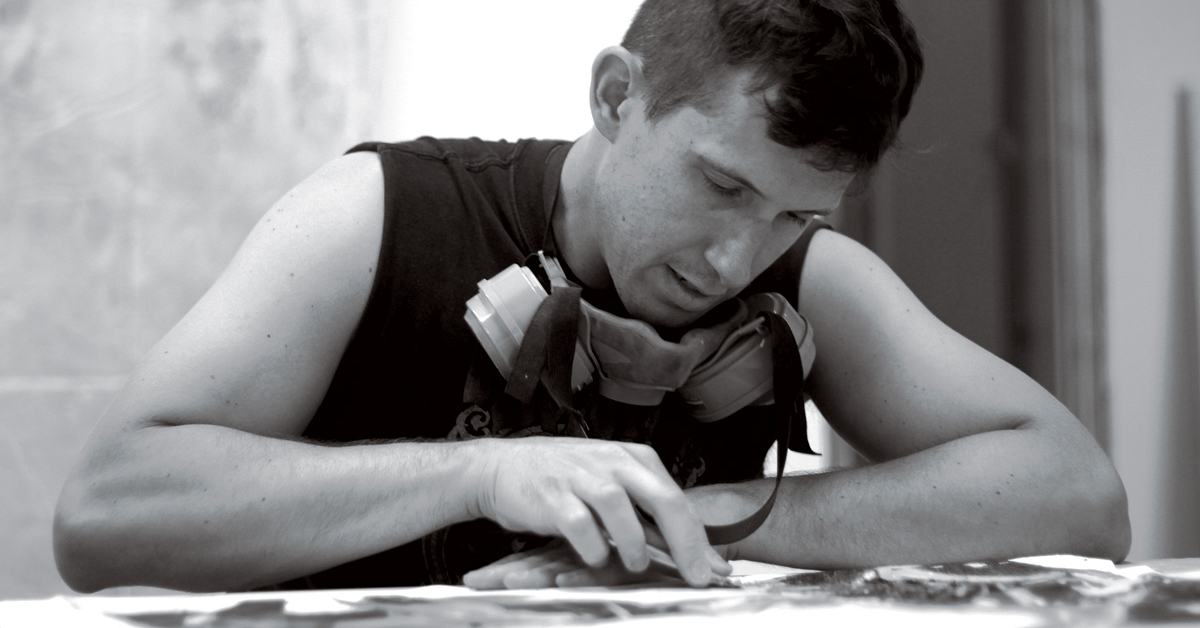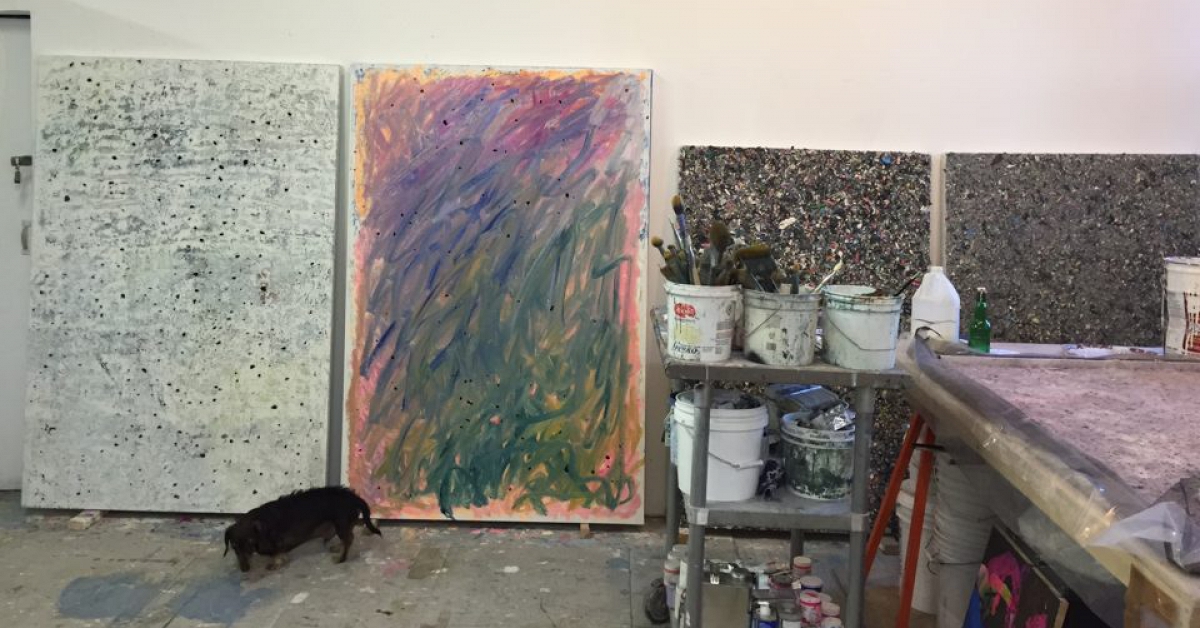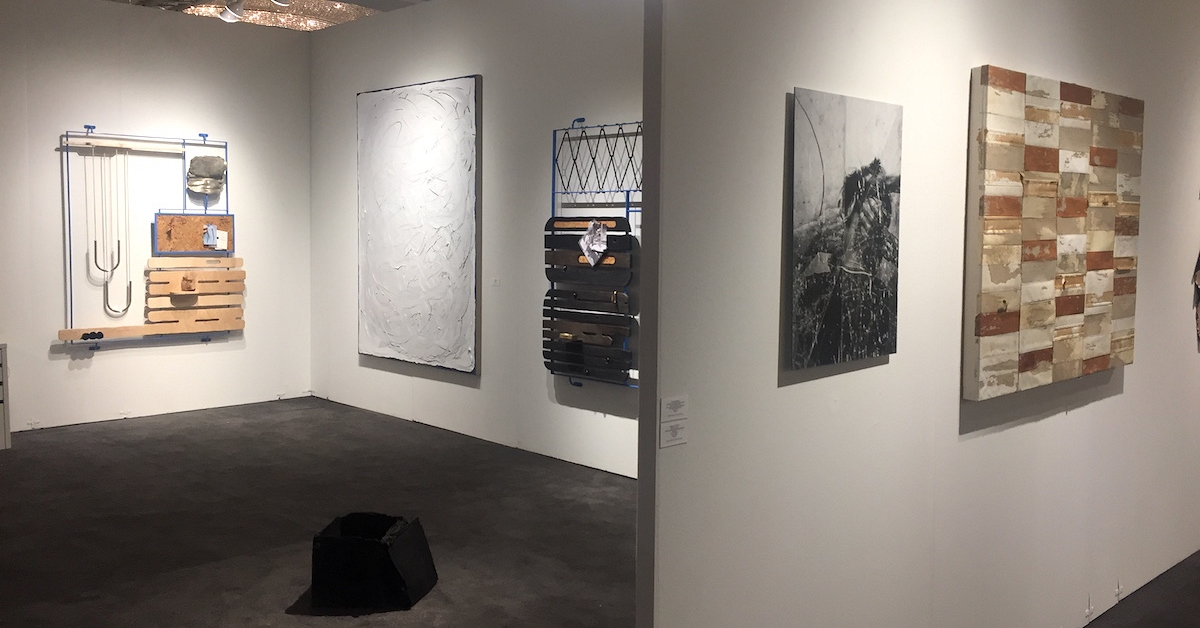Homocidal history and fossils of the future, as presented by Nick van Woert
Metropolism / Aug 31, 2016 / by Misha Kruijswijk / Go to Original
Violence at GEM Museum for Contemporary Art unites many important highlights of Nick van Woert’s oeuvre over the past years. Written on the floor of the first space is the introduction of Henry David Thoreau’s Life in the Woods, a manual for simple living. It reads: “I went to the woods because I wished to live deliberately, to front only the essential facts of life, and see if I could not learn what it had to teach, and not, when I came to die, discover that I had not lived”. For this exhibition, Van Woert is taking his visitors on a personal trip to the woods, where they are welcomed by a group of lifesize cigar store Indian figures. Their faces are replaced with those of historic white men, American presidents and controversial characters like Buffalo Bill. On the walls is an impressive series of framed tree barks, on top and in front of which are cat litter casts of empty beer cans. One of its titles, A Journey to the Surface of the Earth (2014), reveals this series to be a tribute to the Boyle family, a group of collaborative artists that emerged in the 60’s and that is best known for their earth-studies. Throwing a dart at a map, they created - with great accuracy - three-dimensional documents of that exact square meter of ground.
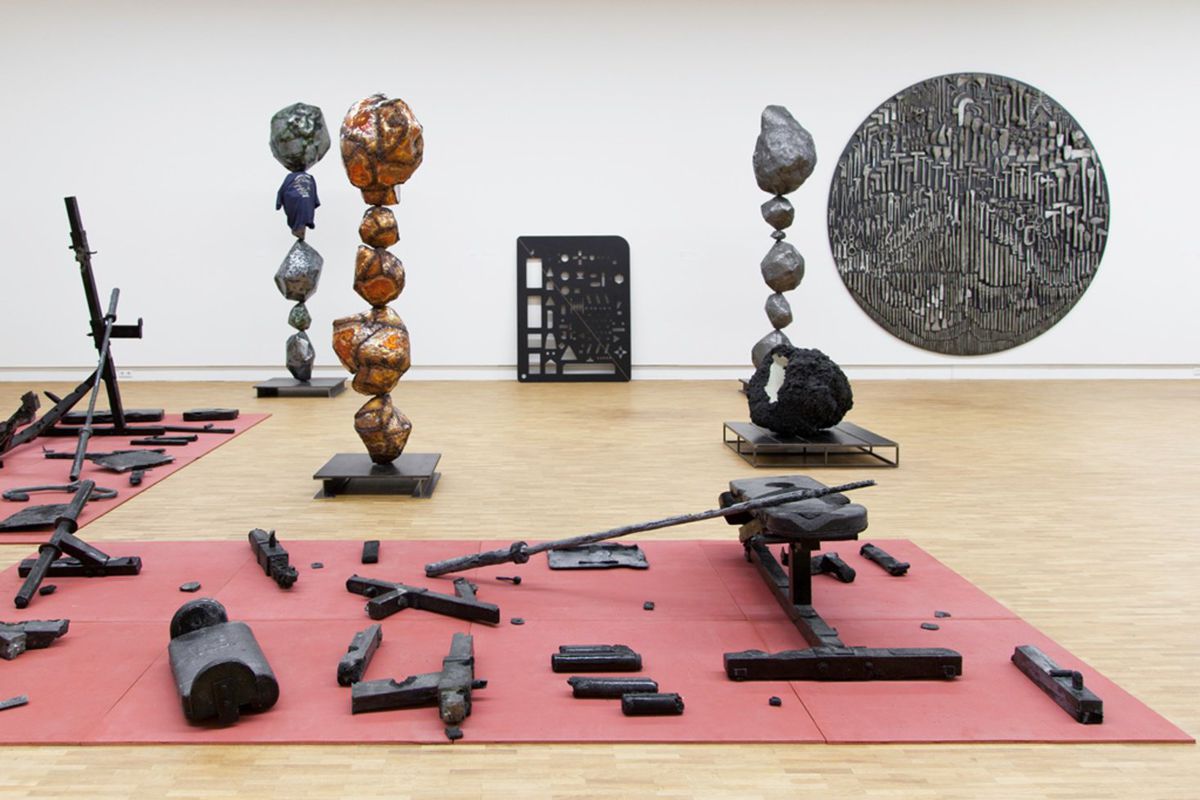
‘Contemporary archeology’, a word coined by the Boyle Family, seems very fit to describe Van Woert’s artistic practice. Most of his work investigates the role of artificial substances in our society, our intoxicated relationship to nature and the dubious choices in material we make to construct our intimate surroundings. Laminate, for example, is an artificial mimicry of wood in plastic. Following in the Boyles footsteps, Van Woert is reversing this process by eliminating entire pieces of American pine tree bark and putting it in a frame. Natura artis magistra…
But it is not his use of natural materials, that is most characteristic to Van Woert’s sculptures. All sorts of plastics, chemical substances and constructing materials form both the DNA of our contemporary surroundings as that of his installations. Van Woert combines a suspicious range of materials, from Muscle Milk to Coca-Cola and from hair gel to cat litter, that he qualifies as ‘erratic’. “These are materials that have no mother, materials that drifted far from home and live a thriving albeit orphan life.” They are cheap and colorful and fast to produce, but what exactly is the price we are paying for this acceleration?
Serving as a soundtrack to the second exhibition room is Van Woert very first record WACO, a collaboration with several artists and musicians in which they recreated a soundtrack unintentionally conceived by the FBI in 1993 during a 51-day standoff, during its attempts to drive out the religious group Branch Davidians. All-night long, they blasted “some of the worst songs that ever been recorded” (thus Van Woert) at the compound in order to torture its inhabitants. In case of this exhibition, the record is blowing at another architectural structure, titled 6221 Osage Ave. (2015), a model the artist has reconstructed meticulously of a Philadelphia town house that was occupied by black-liberation society MOVE. Taking even less subtle measures, the place was bombed and set ablaze by the Pennsylvania state police.
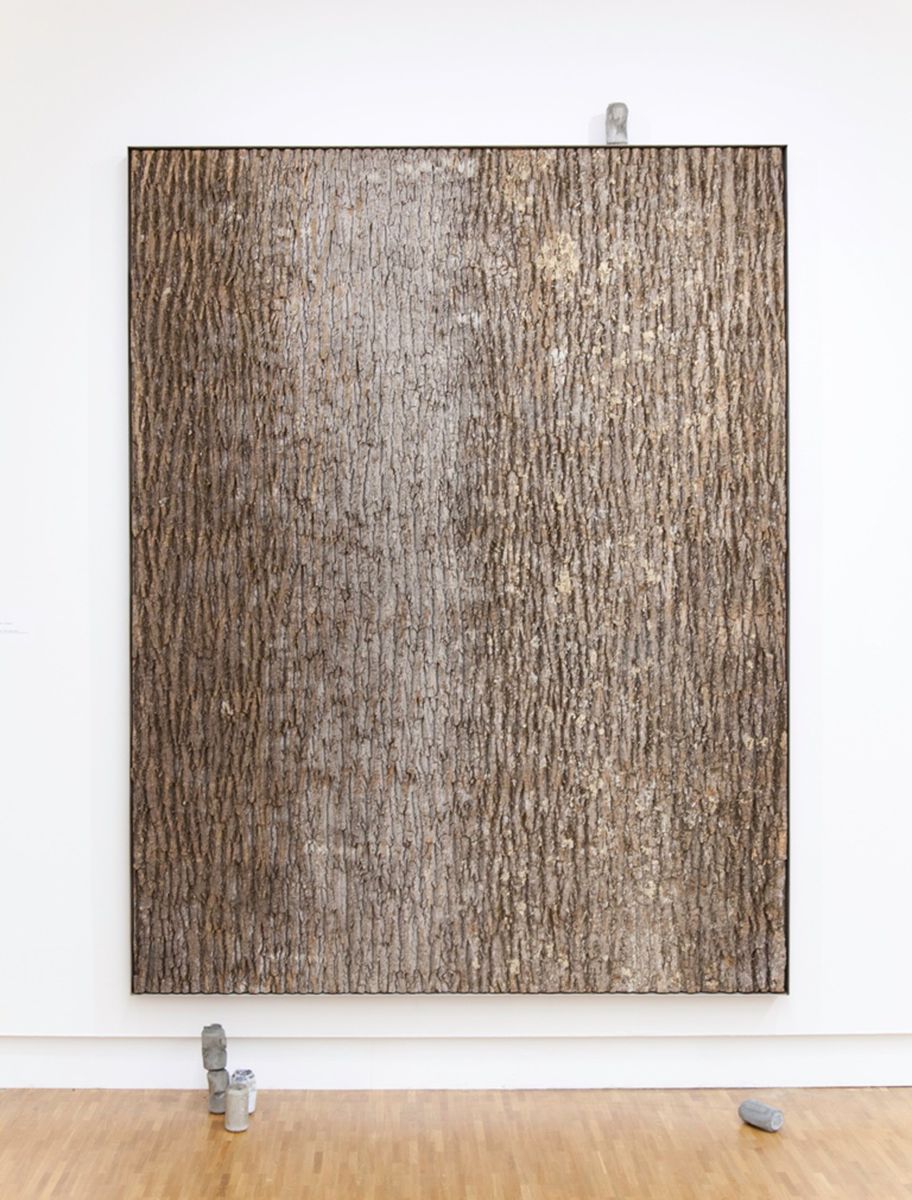
The final space of the exhibition seems a bit over packed with sculpture at first. But walking past all these alienating assemblages of semi-familiar instruments and materials creates a sense of entering a post apocalyptic landscape. Presenting items and materials from our present-day consumerist society in eroded forms and combining them in surprising ways, Nick van Woert turns them into archaeological finds of the future. But regardless what age or geographical location one is coming from, “We’re all in this together”, as a wired fence dripping with polyurethane is reminding us. Next to the fence are two plexiglass tubes, filled with two fine examples of ‘erratics’: chlorine and hair gel. These materials seem comforting and luxurious at first, serving to clean your swimming pool and sustain a good look, but when mixed and put into an envelope they turn into a homemade bomb. While confronting us with ‘the horror underneath’ our everyday materials, Van Woert casually places himself in a tradition of American activists, like Dave Foreman, who have been advertising this trick to burn down billboards and the like. Violence offers highly aesthetic experiences while forming a critical contemplation of attitudes towards nature, the passage of time and the choices we make in the process. Before bloody history will repeat itself once more.

‘Contemporary archeology’, a word coined by the Boyle Family, seems very fit to describe Van Woert’s artistic practice. Most of his work investigates the role of artificial substances in our society, our intoxicated relationship to nature and the dubious choices in material we make to construct our intimate surroundings. Laminate, for example, is an artificial mimicry of wood in plastic. Following in the Boyles footsteps, Van Woert is reversing this process by eliminating entire pieces of American pine tree bark and putting it in a frame. Natura artis magistra…
But it is not his use of natural materials, that is most characteristic to Van Woert’s sculptures. All sorts of plastics, chemical substances and constructing materials form both the DNA of our contemporary surroundings as that of his installations. Van Woert combines a suspicious range of materials, from Muscle Milk to Coca-Cola and from hair gel to cat litter, that he qualifies as ‘erratic’. “These are materials that have no mother, materials that drifted far from home and live a thriving albeit orphan life.” They are cheap and colorful and fast to produce, but what exactly is the price we are paying for this acceleration?
Serving as a soundtrack to the second exhibition room is Van Woert very first record WACO, a collaboration with several artists and musicians in which they recreated a soundtrack unintentionally conceived by the FBI in 1993 during a 51-day standoff, during its attempts to drive out the religious group Branch Davidians. All-night long, they blasted “some of the worst songs that ever been recorded” (thus Van Woert) at the compound in order to torture its inhabitants. In case of this exhibition, the record is blowing at another architectural structure, titled 6221 Osage Ave. (2015), a model the artist has reconstructed meticulously of a Philadelphia town house that was occupied by black-liberation society MOVE. Taking even less subtle measures, the place was bombed and set ablaze by the Pennsylvania state police.

The final space of the exhibition seems a bit over packed with sculpture at first. But walking past all these alienating assemblages of semi-familiar instruments and materials creates a sense of entering a post apocalyptic landscape. Presenting items and materials from our present-day consumerist society in eroded forms and combining them in surprising ways, Nick van Woert turns them into archaeological finds of the future. But regardless what age or geographical location one is coming from, “We’re all in this together”, as a wired fence dripping with polyurethane is reminding us. Next to the fence are two plexiglass tubes, filled with two fine examples of ‘erratics’: chlorine and hair gel. These materials seem comforting and luxurious at first, serving to clean your swimming pool and sustain a good look, but when mixed and put into an envelope they turn into a homemade bomb. While confronting us with ‘the horror underneath’ our everyday materials, Van Woert casually places himself in a tradition of American activists, like Dave Foreman, who have been advertising this trick to burn down billboards and the like. Violence offers highly aesthetic experiences while forming a critical contemplation of attitudes towards nature, the passage of time and the choices we make in the process. Before bloody history will repeat itself once more.

